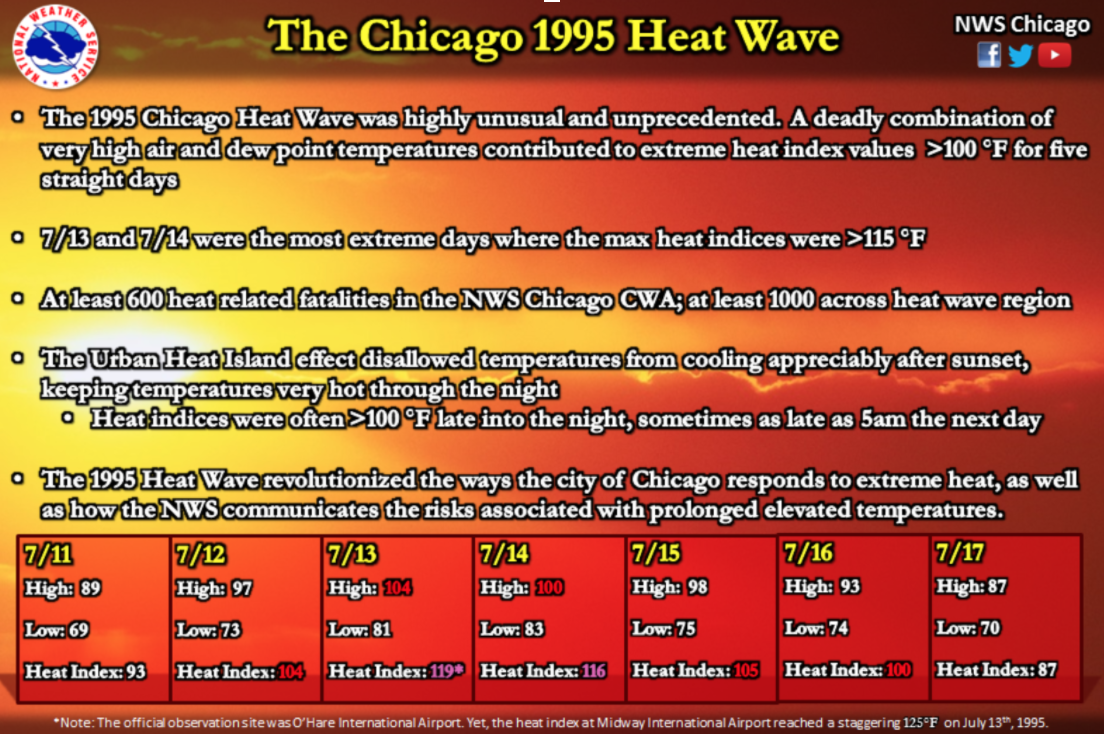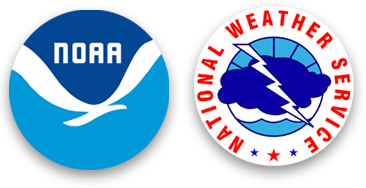Great Chicago Heat Wave of 1995 - National Weather Service Heritage

Great Chicago Heat Wave of 1995
By Emily Senesac (emily.senesac@noaa.gov)On July 12, 1995, a deadly heat wave swept through the Midwest region of the United States, impacting the Chicago area in particular. Due to an unseasonably hot and humid air mass that was slow to leave the region, extreme heat index values were reported, either tying or breaking the record high temperatures in the city. The severity of the heat was due partly to the urban heat island effect, or the notion that temperatures within cities tend to be higher than surrounding rural areas due to increased human activity.
Heat indices, which are combinations of reported temperature and humidity, soared over the four-day heat wave, some topping out at almost 130 degrees at different points across the city. When indices exceed 105 degrees, the ability of the body to regulate internal temperature decreases, leading to serious illness or even death as a result of the extreme heat. From July 12-16, 1995, 750 people lost their lives due to the heat wave, making this one of the deadliest weather events in Chicago history. Most of the victims were the elderly, impoverished citizens living in the heart of Chicago, either living without air conditioning or without the money to turn it on. Additionally, power failures, lack of preparation, and inadequate emergency services contributed to the severity of the event.
The July 1995 Heat Wave was a watershed moment in Chicago’s history. Following the event, the NWS and the city collaborated to develop an impact-based, Chicago-specific set of heat watch/warning criteria that involved monitoring heat indices and predicting changes and duration. Additionally, in the years since the tragedy, technological evolution has led to vast improvements to prediction models, helping to increase awareness and lead time. The ability of the NWS to detect potential heat waves has steadily improved -- predictions can now be made over two weeks in advance.
As warning communications and emergency coordination only continue to improve, the mission of the NWS is and always has been to protect lives and property in the face of inclement weather, including heat waves. By collaborating with Chicago in the aftermath of this deadly event, great strides have been made in prediction and preparedness.
Additional Reading
